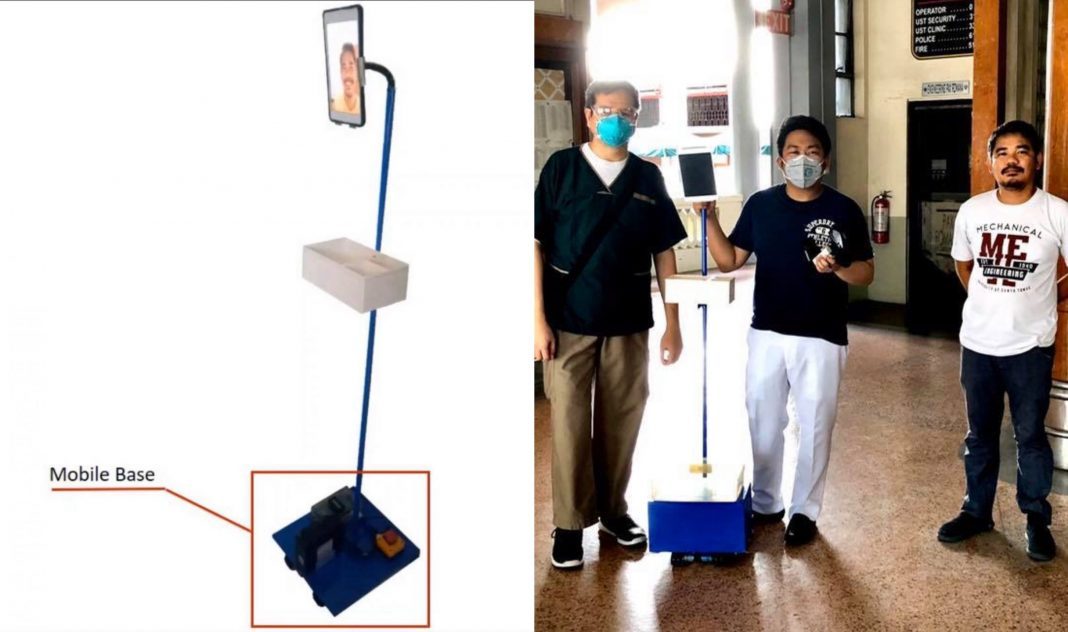SUMMARY
This is AI generated summarization, which may have errors. For context, always refer to the full article.

MANILA, Philippines– University of Santo Tomas (UST) engineering faculty have designed the logistic indoor service assistant (LISA) robot to help minimize direct contact between frontliners and patients with COVID-19, the coronavirus disease.
Engineering assistant professor Anthony James Bautista and Thomasian cardiologist Rodrigo Santos spearheaded and conceptualized the project with the UST faculty of engineering.
“The idea was to build a low-cost, and-easy-to-build telepresence robot,” Bautista told the Varsitarian, the official student publication of UST.
The telepresence robot allows frontliners to deliver medicine and communicate with patients remotely.
The equipment uses a tablet device with internet-based communication platforms such as Zoom, Viber, or FaceTime to allow communication between health care staff and patients. (READ: Pisay appeals for help to produce 3D-printed face shields for health workers)
The robot is set on a mobile base controlled via remote, allowing it to move in different directions.
It also has a compartment box for delivery of medication to conscious and stable patients in the hospital.
By minimizing physical contact, the robot may also help in conserving the use of protective personal equipment. (READ: EXPLAINER: The PPE keeping our healthcare workers safe)
The Department of Science and Technology Philippine Council for Industry, Energy and Emerging Technology Research and Development (DOST – PCIEERD) has expressed interest in funding the project for 3 months, Bautista said. (READ: ‘Medibot’ to do rounds on Malaysian virus wards)
The LISA robot is in the pilot testing stage, but Bautista hopes that with improvements and support from DOST PCIEERD, it will be ready for hospital use. – Rappler.com
This article was first published on The Varsitarian website. It has been republished and edited on Rappler with permission.
Add a comment
How does this make you feel?
There are no comments yet. Add your comment to start the conversation.